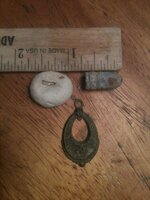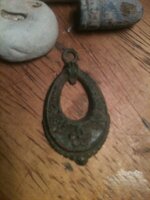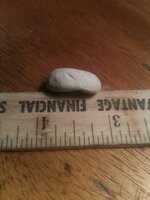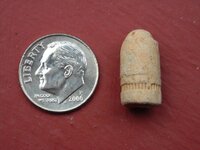coinhound1983
Sr. Member
- Aug 22, 2012
- 349
- 138
Went to 1 of my spots today. The spot where I found a 1917-d Merc and a SL quarter. Well nothing but clad today, however I found a projectile another piece of lead and a copper charm pendant. I was wondering if I can get some insight on the charm and the unknown piece of lead thnx





 Breezie
Breezie

